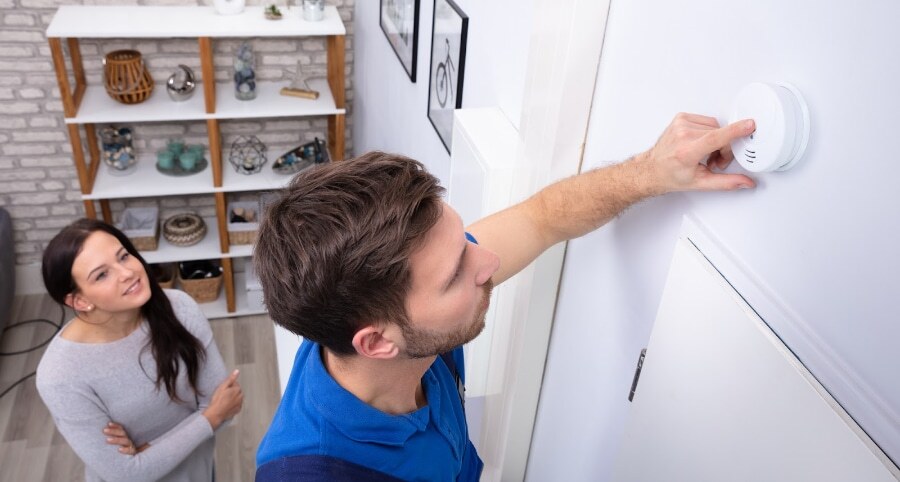Where to install carbon monoxide detectors in your Lynchburg home

Carbon monoxide is different from other threats homeowners face as you are unable to see or smell it. Even though it’s not detectable with human senses like fire, smoke, and flooding, you can still simply and effectively protect your family with CO detectors. Find where to install carbon monoxide detectors in your Lynchburg residence and investigate the perks of including them in your whole-home security plan.
Where will you find carbon monoxide?
Owing to its dearth of color and smell, carbon monoxide has gained the nickname of the silent killer. It emerges because of an incomplete combustion of fuels in appliances like furnaces, generators, gas stoves, and fireplaces. Most households won’t encounter issues with their fuel-burning appliances if they keep them maintained. But if you neglect regular servicing or don’t have adequate ventilation, a collection of this potentially life-threatening gas may take place.
Early signs of carbon monoxide poisoning include nausea, vomiting, headaches, and dizziness. These frequently emerge at low quantities of CO. Being subjected to higher amounts for an extended time can result in severe medical difficulties and even death.
Recommendations on where to install Lynchburg carbon monoxide detectors
Each home need to have at least one carbon monoxide detector. Really, you ought to place them on every floor, and that includes basements where fuel-burning appliances are frequently located. Follow these recommendations on where to install Lynchburg carbon monoxide detectors:
-
Install one within 10 feet of sleeping quarters. This placement is essential, so install it here in the event you only opt for a single carbon monoxide detector.
-
It’s wise to have a carbon monoxide detector on every floor of your property, especially on floors with fuel-consuming appliances.
-
To circumvent false alarms, place them at least 10 feet from causes of carbon monoxide, like furnaces. A small amount of CO could be discharged when appliances start up.
- Avoid spots near entryways and windows, as outside air will lessen the unit’s usefulness.
-
Put them in areas above attached garages.
As you would with smoke detectors, inspect your CO units regularly, wipe away dust and grime as needed, and avoid unintentionally putting something in front of them. Generally speaking, replace your detectors every five years.
Elevate safety by incorporating CO detectors into your home security system
Today’s home security systems provide more possibilities than ever before. In fact, you can incorporate CO detectors and other environmental alarms directly into your system. Doing so will warn you and your monitoring specialists if your device is triggered. This type of backup is valuable in the event you fail to hear the alarm or if you’re away from home.
Elevate safety by incorporating CO detectors into your home security system
Today’s home security systems provide more possibilities than ever before. In fact, you can incorporate CO detectors and other environmental alarms directly into your system. Doing so will warn you and your monitoring specialists if your device is triggered. This type of backup is valuable in the event you fail to hear the alarm or if you’re away from home.
Install carbon monoxide detectors with your Vivint smart home in Lynchburg